Introduction
Nurse Practitioners (NPs) and Physician Assistants (PAs) are essential members of the healthcare team, playing a critical role in delivering high-quality healthcare to individuals across various settings. With their advanced training and expertise, NPs and PAs contribute significantly to the provision of high-quality care. [REF, REF]
The presence of NPs and PAs in the healthcare workforce helps address the growing demand for care, particularly in underserved areas. They bridge the gap in access to healthcare by working in rural communities, community health centers and other settings with limited resources. Their presence ensures that individuals who might otherwise face barriers to care receive the attention they need, promoting health equity and reducing disparities.
Both NPs and PAs have been advocating for increased professional autonomy. They are pushing for expanded scopes of practice, enabling them to practice to the full extent of their education and training. This autonomy allows NPs and PAs to provide more efficient and timely care, ensuring that patients receive the attention they need without unnecessary delays.
As these professions continue to evolve, there is a growing recognition of the need for ongoing education and training. As licensed professionals, NPs and PAs must be sure to engage in continuing education in order to stay abreast of the latest developments and meet licensing requirements. For example, NPs must earn recertification every five years or less and may sit for the appropriate exam or complete a minimum 1,000 hours of clinical practice and 75-150 CEUs in their specialty. The ANCC and the AANPs offer national certifications in their specialty areas. And, PAs maintain certification by completing 100 CE credits every two years, which must include at least 50 Category 1 credits. They must also pass a recertification exam every 10 years through the NCCPA. [REF]
As lifelong learners, many NPs and PAs are on a constant quest to enhance their knowledge and skills. It is important for educational institutions and professional organizations delivering this ongoing education to understand the preferences and needs of licensed NPs and PAs.
Methods
In the spring of 2023, a survey instrument was created to help better understand the educational realities, preferences and perceived needs of NPs and PAs. The survey presented 10 questions, including five questions with structured choice answers and five questions with open responses. The survey was designed to be completed in under 10 minutes.
Email invitations to complete the survey (Survey Monkey) were sent to participants from prior educational activities. Participation in the survey was incentivized with entry into a lottery for free registration for upcoming educational offerings. The survey was closed after one week, and traditional quantitative and qualitative analyses were conducted.
Results
In total, 481 survey responses were received. This included responses from 322 NPs and 132 PAs. Responses from NPs and PAs were analyzed separately and compared for trends or differences between populations.
Most Critical Takeaways:
- There appear to be minimal contextual differences in the lifelong learning experiences and expectations between NPs and PAs.
- Both NPs and PAs prioritize live, in-person meetings over online enduring or virtual live education. That being said, 8–15% of NPs and PAs prioritize online enduring or virtual live meetings over live, in-person meetings.
- The primary driver of participation in CE/CPD for both NPs and PAs is educational topic. The educational topics (or needs) that were most sought after by respondents included: cardiology, orthopedics, diabetes, infectious care, mental health and dermatology.
- Both NPs and PAs attempt to leverage a wide variety of professional resources to stay up to date with emerging changes in practice. Two interesting findings:
- Outside of CE/CPD interventions, the websites and journals from the relevant professional organizations (AANP and AAPA) appear to be a primary source for news
- While journals were an oft-listed source for professional news, there was a sizable portion of both NPs and PAs who do not have access to clinical journals. This is likely a result of clinical practice setting but deserves additional exploration.
- Not all social media is created equally! While more than half of NPs and PAs leverage LinkedIn for professional purposes, less than 10% claimed using Instagram, Twitter or TikTok.
|
Question 1: How much money is spent on your CE annually?
Choice options were $0-250, $215-750 and >$750.
The vast majority, more than 75% of respondents, stated that they spend more than $750 each year on CE.
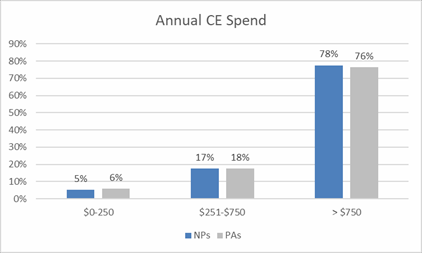
Figure 1: Annual CE Spend
Question 2: How many CE hours do you try to earn each year?
Choice options were 0-10, 11-20, 21-30, 31-40, 41-50 and > 50 hours.
Of all the data generated in this survey, responses to this question showed the greatest variance both within and across the NP and PA cohorts. Sixty-one percent of NPs are accumulating ~30 hours a year, while 71% of PAs are accumulating 50 or more hours a year. It is believed that this most likely is related to the variability in (re)certification requirements between professions and across state licensing requirements.

Question 3: What percentage of your annual CE expense does your employer pay?
Choice options ranged from 0-10% up to 91-100%. For the data visualization, these choices were aggregated into five tiers.
While there is variation across the total population, there were little-to-no differences between NPs and PAs, with employer contributions at 81-100% being the most prevalent response for both cohorts.

Figure 3: Employer Contribution
Question 4: What format do you prefer for your CE? Please rank order.
Choice options included in-person conferences, on-demand, or livestreaming conferences.
In rank order analysis, the lower the number the greater the respondent preferences for the format. For both NPs and PAs, live, in-person conferences were preferred, while both on- demand and livestreaming conferences were less preferred. However, there was very little difference between the on-demand and livestreaming conference options. And there was very little difference between NPs and PAs.
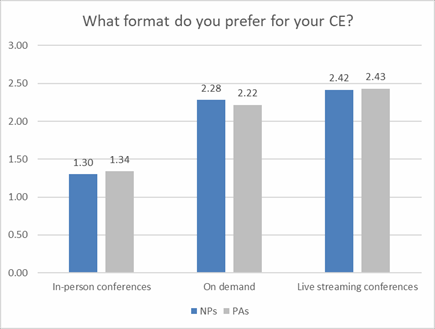
Figure 4: Preferred CE Format (Average Rank Ordered)
A secondary analysis of the rank order voting was done to specifically count first-place votes. This analysis better demonstrates the magnitude of the preference for in-person conferences with nearly 80% of both NPs and PAs voting in-person conferences as their preferred format.

Figure 5: Preferred CE Format (First-Place Votes)
Question 5: What features influence your CE participation? Please rank in order.
Choice options included preparation for recertification, networking, quality of speakers, convenience to home, educational topics, time of year, or affordability of host hotel.
As with the prior rank order question, the lower the number the more the respondents prioritize each choice option. For both NPs and PAs, the educational topic was the top rank driver of participation. Across all other choice options, there was a noticeable difference in how NPs and PAs ranked preparation for recertification with PAs prioritizing it ahead of affordability and convenience. Aside from this, there was very little difference between how NPs and PAs prioritize their drivers for CE participation.

Figure 6: Drivers for CE Participation (Average Rank Ordered)
A secondary analysis of the rank order voting was done to specifically count first-place votes. This analysis better demonstrates that nearly 50% of both NPs and PAs prioritize educational topics as the No. 1 driver for CE participation. This analysis also illustrates other small differences between NPs and PAs; however, the significance of these differences is unlikely to be meaningful.
Figure 7: Drivers for CE Participation (First-Place Votes)
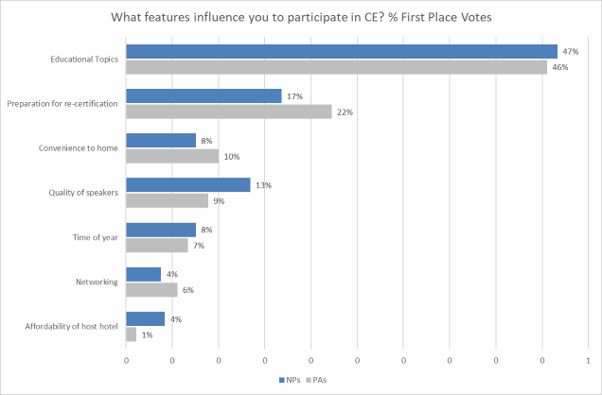
Questions 6–9 were presented as open-ended response questions. Question responses were cleaned per established best practices for qualitative analyses. [REF] For those unfamiliar with qualitative analyses, data cleaning is a necessary step in optimizing the quality of qualitative data. Established best practices include removing unnecessary values, removing duplicate data, addressing typos, converting data types, addressing missing values, reformatting responses, or removing unwanted outliers. For example, survey question 6 explored educational topics of interest and more specific responses such as “heart attack”, “MI” or “hypertension” were aggregated thematically as “Cardiology”.
Likewise, survey question seven explored challenges in clinical practice and more specific responses such as “patients”, “patient compliance” and “pt adherence” were aggregated thematically as “Patients”.
Question 6: What topics would be of most interest in 2023?
Respondents could submit as many or as few responses as they desired. Responses were cleaned as described above and counted. Given the number and variety of responses, the top 10 are presented in Figure 8 along with the response counts. It should be noted that the response counts for NPs are higher than that for PAs as a result of the sample size of each population (n = 322 NPs and 132 PAs). While there was some difference in order of the topics, the top educational topics reported by NPs and PAs overlapped completely.
Figure 8: Top 10 Requested Clinical Areas for Future CE

Question 7: What are your biggest challenges in practice?
Not unexpectedly, the No. 1 practice challenge reported by NPs and PAs is time. Beyond that, the challenges reported varied, with the number of responses per challenge dropping quickly. Perhaps of note, and this cannot be easily quantified, but the richness/thoughtfulness of the responses to this question was much different than other questions in the survey. Responses were often full sentences or longer, suggesting that these challenges weigh heavily on the minds of NPs and PAs. Finally, and not unsurprisingly, most of the challenges’ themes were shared across NP and PA cohorts, and education, or “staying up to date,” on clinical care best practices was a top three challenge for both groups.
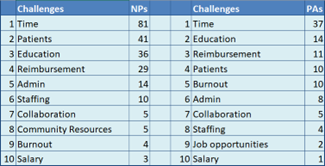
Figure 9: Top 10 Challenges in Clinical Practice
Question 8: What are the top three sources you rely on for professional news?
Of all the questions, question 8 garnered the highest volume of responses, suggesting that both NPs and PAs attempt to cast a wide net to stay current with professional news. There were several sources that were frequently cited by both professions, including UptoDate, Medscape, Journals and Doximity. NPs listed AANP communications as their No. 2 preferred source, while PAs listed AAPA communications as their No. 1 preferred source.
Figure 10: Top 10 Sources for Professional News
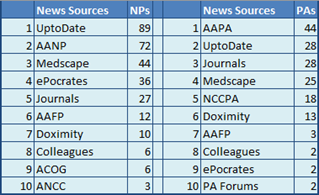
Question 9: Which clinical journals do you currently subscribe to?
While in question 8, journals were cited as a preferred source for professional news. When asking which specific journal subscriptions are most common, “None” was the No. 1 response for NPs and the No. 2 response for PAs. This likely suggests that there is a unique dichotomy where some professionals find journals critical to lifelong learning, while other professionals do not have direct access to journals. For NPs, the Journal of the AANP was the runaway leading subscription. For PAs, the Journal of AAPA was the most subscribed journal.
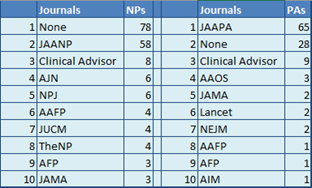
Figure 11: Top 10 Read Clinical Journals
Question 10: What social media do you use for professional purposes?
Choice options included Facebook, Instagram, LinkedIn, TikTok and Twitter.
The final question quantified established and emerging social media platforms that may be leveraged for lifelong learning. As with other data, there were minimal differences between NPs and PAs. LinkedIn was reportedly used by 50+% of NPs and PAs. Facebook was reportedly used by approximately one-third of NPs and PAs. Both NPs and PAs report very low utilization of Instagram, TikTok or Twitter.
Figure 12: Current Social Media Apps Used for Professional Purposes

Discussions
As originally stated, NPs and PAs are increasingly critical drivers of quality healthcare addressing the growing demand for care, particularly in underserved areas. With this increasing service, both these Advanced Practice Clinicians have been advocating for increased professional autonomy, enabling them to practice to the full extent of their education and training. This autonomy allows NPs and PAs to meet the needs of the quintuple aim by delivering care that improves the patient experience, provides better outcomes, reduces costs, mitigates clinician burnout and enhances health equity. [REF]
To these ends, those providing continuing education (CE) and continuing professional development (CPD) must fully understand the context and drivers of lifelong learning for NPs and PAs. Leveraging the data and insights presented herein will go a long way to achieving this goal.
So, what are our most critical takeaways? We believe that there are five lessons for those planning, designing, developing and/or funding CE and CPD for NPs and PAs:
- There appear to be minimal contextual differences in the lifelong learning experiences and expectations between NPs and PAs.
- Both NPs and PAs prioritize live, in-person meetings over online enduring or virtual live education. That being said, 8–15% of NPs and PAs prioritize online enduring or virtual live meetings over live, in-person meetings.
- The primary driver of participation in CE/CPD for both NPs and PAs is educational topic. The educational topics (or needs) that were most sought after by respondents included: cardiology, orthopedics, diabetes, infectious care, mental health and dermatology.
- Both NPs and PAs attempt to leverage a wide variety of professional resources to stay up to date with emerging changes in practice. Two interesting findings:
- Outside of CE/CPD interventions, the websites and journals from the relevant professional organizations (AANP and AAPA) appear to be a primary source for news
- While journals were an oft-listed source for professional news, there was a sizable portion of both NPs and PAs who do not have access to clinical journals. This is likely a result of clinical practice setting but deserves additional exploration.
- Not all social media is created equally! While more than half of NPs and PAs leverage LinkedIn for professional purposes, less than 10% claimed using Instagram, Twitter or TikTok.
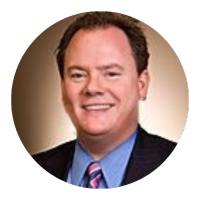 Chuck Dillehay has served as chief executive to several leading healthcare associations since 1994. In 2011, he created Skin, Bones, Hearts & Private Parts, which is now the fastest-growing series of national NP/PA CME conferences in the country. Thousands of clinicians are satisfying their CME requirements through his company’s nine in-person and virtual events as well as on-demand offerings. You can reach him at Chuck@SkinBonesCME.com and connect with him on LinkedIn.
Chuck Dillehay has served as chief executive to several leading healthcare associations since 1994. In 2011, he created Skin, Bones, Hearts & Private Parts, which is now the fastest-growing series of national NP/PA CME conferences in the country. Thousands of clinicians are satisfying their CME requirements through his company’s nine in-person and virtual events as well as on-demand offerings. You can reach him at Chuck@SkinBonesCME.com and connect with him on LinkedIn.
 Dr. McGowan has served in leadership positions in numerous providers and commercial supporters. He is a Fellow of the Alliance (FACEhp), has served on numerous committees, launched the Outcomes Standardization Project, and hosted the Alliance Podcast Legends Interview series. In 2012, he co-founded ArcheMedX, Inc, a healthcare informatics and e-learning company to apply his research in practice. You can follow him on X (formerly Twitter) (@BrianSMcGowan) and connect with him on LinkedIn.
Dr. McGowan has served in leadership positions in numerous providers and commercial supporters. He is a Fellow of the Alliance (FACEhp), has served on numerous committees, launched the Outcomes Standardization Project, and hosted the Alliance Podcast Legends Interview series. In 2012, he co-founded ArcheMedX, Inc, a healthcare informatics and e-learning company to apply his research in practice. You can follow him on X (formerly Twitter) (@BrianSMcGowan) and connect with him on LinkedIn.